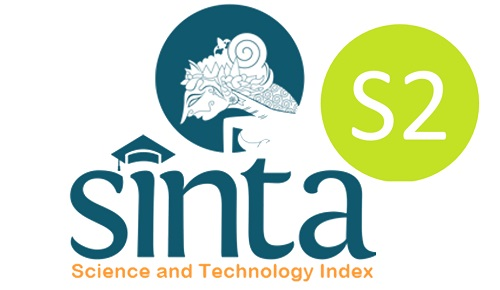RETHINKING THE USE OF L1 IN L2 CLASSROOM
DOI:
https://doi.org/10.22373/ej.v6i1.2514Keywords:
Mother tongue, foreign language, language learning, language teachingAbstract
Using mother tongue (L1) in a foreign language (L2) classrooms is inevitable. Despite the debate over the adequacy of using L1 in the teaching of L2, this paper argues using L1 in the classroom does not hinder learning, and that L1 has a facilitating role to play in the classroom and can help L2 learning and acquisition. This paper shows that L1 is an inseparable part of language teaching, and it has several functions for both the students and teachers in English language learning and teaching. Therefore, those who believe L1 has a minimal role to play in the teaching of a foreign language are invited to think again of its role and contributions it makes to the fields of language learning and teaching.
Downloads
References
Al Sharaeai, W. A. A. (2012). Students’ perspectives on the use of l1 in English classrooms (Doctoral dissertation). Retrieved from: Iowa State University Digital Repository. 12898.
Auerbach, E. R. (1993). Reexamining English Only in the ESL Classroom. TESOL Quarterly, 27(1), 1-18. doi:10.2307/3586949
Benson, C. (2004). The importance of mother tongue-based schooling for educational quality. Commissioned Study for EFA Global Monitoring Report 2005, 1(1). Retrieved from: https://learningportal.iiep.unesco.org/en/notice/T1422892154
Bowles, H. (2009). Conversation analysis and language for specific purposes. Bern: P. Lang.
Brown, H. D. (1994). Teaching by principles: An interactive approach to language pedagogy. Englewood Cliffs: Prentice Hall Regents.
Eslami, Z. R. (2011). Use of L1 for teaching L2: A help or a hindrance? TESOL Convention and Exhibit, 10(1), 1-6. Retrieved from: https://www.researchgate.net/publication/28204098_L1_in_the_EFL_classroom_More_a_help_than_a_hindrance.
Ghorbani, A. (2013). First language use in the context of Iranian EFL classroom discourse. Kuala Lumpur: University of Malaya.
Gomathi, B., & Kiruthika, P. (2013). Role of L1 in English language teaching to rural area students with reference to erode region. International Journal of Humanities and Social Science Invention 2(12), 24-26. Retrieved from: http://www.ijhssi.org/papers/v2(12)/Version-1/C021201024026.pdf
Harun, H., Massari, N., & Behak, F. P. (2014). Use of L1 as a Mediational Tool for Understanding Tense/Aspect Marking in English: An Application of Concept-based Instruction. Procedia - Social and Behavioral Sciences, 134, 134-139. doi:10.1016/j.sbspro.2014.04.231
Hidayati, I. N. (2012). Evaluating The Role Of L1 In Teaching Receptive Skills And Grammar In Efl Classes. Indonesian Journal of Applied Linguistics, 1(2), 17. doi:10.17509/ijal.v1i2.82
Lightbown, P., & Spada, N. M. (2013). How languages are learned (3rd ed.). Oxford: Oxford University Press.
Mart, Ç. T. (2013). The facilitating role of L1 in ESL classes. International Journal of Academic Research in Business and Social Sciences, 3(1), 9-14. Retrieved from: http://www.hrmars.com/admin/pics/1400.pdf.
Miles, R. (2004). Evaluating the use of L1 in the English language classroom. Birmingham: University of Birmingham.
Schweers, C. W. (1999). Using L1 in the L2 classroom. English Teaching Forum, 37(2), 6-13. Retrieved from: https://eric.ed.gov/?id=EJ601576
Scott, V. M., & Fuente, M. J. (2008). What’s the problem? L2 learner’s use of the L1 during consciousness-raising, form-focused tasks. The Modern Language Journal, 92(1), 100-113. doi:10.1111/j.1540-4781.2008.00689.x
Saville-Troike, M. (2010). Introducing second language acquisition. Cambridge: Cambridge Univ. Press.
VanderHeijden, V. (2010). “Is that English I hear over there?†Rethinking the prohibition on L1 use in foreign language learning. Texas Papers in Foreign Language Education. 14(1), 3-17. Retrieved from: http://studentorgs.utexas.edu/flesa/TPFLE_New/Issues/Summer%202010/2_Vincent%20Vanderh eijden.pdf.
Wharton, C. (2004). Informed use of the mother tongue in the English language classroom (Doctoral dissertation). Retrieved from: https://www.birmingham.ac.uk/documents/.../secondlanguage/wharton-p-grammar.pdf
Williams, D. G. (2010). Evaluating the L1 use of adult intermediate Korean English language learners during collaborative oral tasks (Doctoral dissertation). Retrieved from: http://asian-efl-journal.com/Thesis/Thesis-Williams.pdf
Yough, M. S. (2010). Keeping native languages in ESL class: Accounting for the role beliefs play toward mastery. Mid-Western Educational Researcher, 23(2), 27-32. Retrieved from: https://eric.ed.gov/?id=EJ942897
Zakaria, F. (2013). The role of first language in EFL Classroom. Jurnal Ilmiah Didaktika, 13(2). doi:10.22373/jid.v13i2.484
Downloads
Published
Issue
Section
License
Proposed Policy for Journals That Offer Open Access
Authors who publish with Englisia journal agree to the following terms:
- Authors retain copyright and grant the journal right of first publication with the work simultaneously licensed under a Creative Commons Attribution License that allows others to share the work with an acknowledgement of the work's authorship and initial publication in this journal.
- Authors are able to enter into separate, additional contractual arrangements for the non-exclusive distribution of the journal's published version of the work (e.g., post it to an institutional repository or publish it in a book), with an acknowledgement of its initial publication in this journal.
- Authors are permitted and encouraged to post their work online (e.g., in institutional repositories or on their website) prior to and during the submission process, as it can lead to productive exchanges, as well as earlier and greater citation of published work (See The Effect of Open Access).









